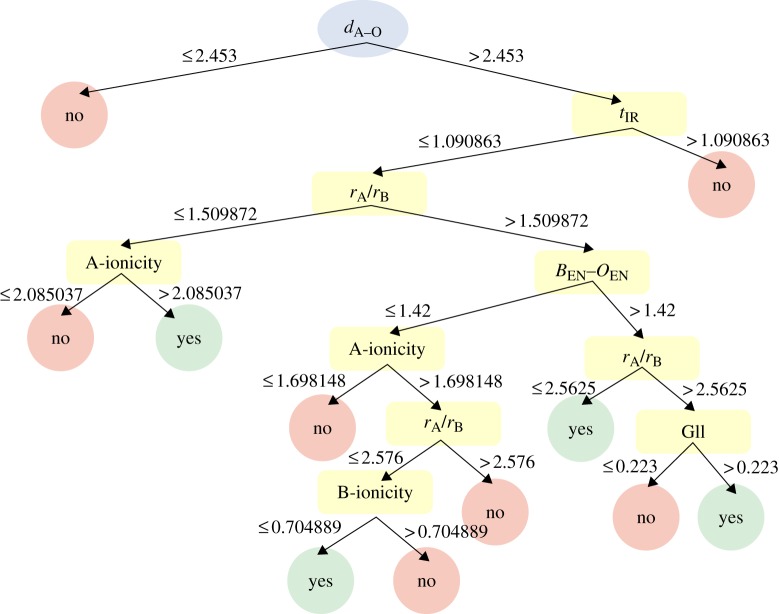Figure 6.
The dendrogram (or tree diagram) classification model developed based on the recursive partitioning method for identifying new potentially stable perovskite compounds is shown. We used the Shannon entropy as a selection criterion to identify key descriptors, and a hierarchical set of design rules were formulated to develop classification schemes that have been approached by empirical observation. The leaf nodes that are labelled ‘yes’ or ‘no’ indicate compounds that may have a stable perovskite structure-type or not a perovskite, respectively. From the dendrogram, 11 design rules were formulated for testing the perovskite structural stability. By applying the dendrogram to the four candidate high-temperature materials BiErO3, BiHoO3, BiTmO3 and BiLuO3, only two compounds, BiTmO3 and BiLuO3, were identified as having the stable perovskite crystal structure at high-pressure/-temperature conditions. As a result, BiTmO3–PbTiO3 and BiLuO3–PbTiO3 solid solutions were identified as new perovskite compounds with a significantly high TC while having piezoelectric behaviour. The dendrogram application of other Bi-based systems BiMEO3, where ME=Cr, Co, Ga and Ni, also identifies them as having the perovskite crystal structure in agreement with the literature (Ishiwata et al. 2002; Baettig et al. 2005; Goujon et al. 2008; Oka et al. 2010). In the dendrogram, dA–O is the ideal A–O bond length calculated based on the bond-valence method, tIR is the tolerance factor from ionic radii data, rA is ionic radii (Shannon’s scale) of the A-site cation with coordination number 12, rB is the ionic radii (Shannon’s scale) of the B-site cation with coordination number 6, BEN–OEN is the electronegativity difference (Pauling’s scale) between B-site and O-site, A-ionicity is the product of rA/rO and AEN–OEN, B-ionicity is the product of rB/rO and BEN–OEN and GII is the global stability index (Zhang et al. 2007). (Online version in colour.)

